Origins of Yoga
Over the years yoga has taken on many forms, with its origins tracing back to India. The word yoga was first mentioned in an old sacred text called the Rig Veda. The Vedas were a collection of writings containing rituals, songs and mantras used by Vedic priests over 5,000 years ago. Hatha yoga began to develop across Asia and beyond until it was introduced to the west when Swami Vivekanada demonstrated yoga postures at a World Fair in Chicago in the 1890s. This generated a lot of public interest and paved the way for other yogis and Swamis from India in the years that followed. In the 1940s Ashtanga yoga was established by Pattabhi Jois, and in the late 1960s the Beatles were photographed meditating with Maharishi Mahesh. Soon thereafter from a mix of Hatha and Ashtanga yoga, modern day vinyasa flow yoga was born.
Vinyasa Flow Yoga
The word vinyasa means flow, so the linking of postures in a smooth and logical order with combinations that “flow”well together is the main purpose of this style of yoga. When the body moves smoothly from one pose to the other while synchronizing the breath to the movements, it creates a calm and relaxed state of being. Who doesn’t want that? When the nervous system is calm and relaxed we are more efficient and our bodies remain in a state of homeostasis. Depending on the pace of the class and the mix of strengthening postures, vinyasa flow yoga can also be athletic and vigorous, which is great for burning off stress. Every teacher has their own spin on this style of yoga and it can range widely in both speed and intensity. The importance is to find an experienced teacher who can create intelligent flows that feel good and keep the body safe. Anyone can take a group of yoga poses, throw them up in the air and hope they land in good order. It takes a skilled and experienced instructor to lead a powerful and memorable class.
Need Energy? Try this vinyasa flow yoga sequence to wake up and get pumped.
Standing Backbend
Benefits: Energizing, lengthening and decompressing.
How to do it: Stand with your feet hip-width apart. Place your hands at the low back and press the hips forward gently. Lift the heart and extend one or both arms towards the sky. Engage the legs, draw the low belly in and create a lift from the pelvic floor (bandha). Hold for a few breaths and return to a neutral standing position.
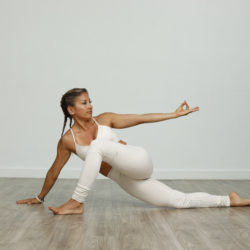
Low Lunge Twist
Benefits: Opens the hips and stretches the low back.
How to do it: Find a low lunge position with the back knee on the ground. Place your left hand on the left knee and press the leg away from the torso. Roll onto the outer edge of the foot while dropping the right hip towards the floor. Engage the low belly and breathe deeply through the nose.
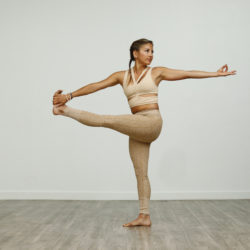
Standing Twist
Benefits: Stretches the hamstrings and low back. Wrings out the spine, improves balance and concentration. Strengthens the muscles of the feet and legs.
How to do it: Stand in mountain pose. Shift the weight into the right foot and hug the left knee towards the chest. Find a focal point and try to find the balance on one foot. Grab the knee with the opposite hand and begin to twist the torso while gradually reaching the left arm back. If you want to extend the leg straight you can do that as long as it feels good on your hamstring. Try to balance for a total of five to eight long breaths.
Feeling Wiped? Get on your mat for this mellow flow of T.L.C. postures.
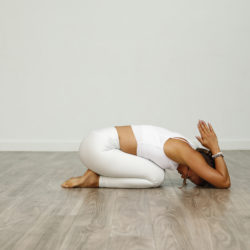
Child’s Pose
Benefits: Calms the nervous system and lowers heart rate. Relaxes the mind and improves breathing. Stretches the low back, opens the shoulders and lengthens the spine.
How to do it: Come onto hands-and-knees, or “table top” position. Melt the hips back towards the heels and stretch the arms forward. Walk the hands to the right and left sides for a few breaths to open the side ribs. Take prayer hands over the head or prayer twist to each side for deeper variations. Knees open wide relaxes the chest between the legs and knees together gives your torso a gentle rest on the thighs.
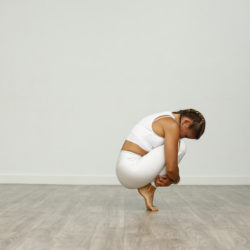
Tip Toe Egg Squat
Benefits: Stretches the spine, improves balance, calms the nervous system and creates a feeling of soothing comfort. Tones the abs and gently massages the heart chakra.
How to do it: Start in a kneeling position with the toes tucked under. Bring the knees off the floor and into the chest, wrapping the arms around the shins. Engage the core, breathe deeply and begin to lower the forehead to the knees. Try to maintain the balance for eight consecutive breaths and close your eyes for an added challenge.
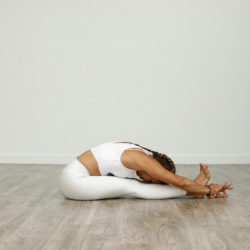
Stretch of the West Pose
Benefits: Lengthens the spine, hamstrings and calves. Calms the nervous system and strengthens the front of the legs. Allows the practitioner to draw the sense inwards (pratyahara), preparing the mind for meditation (dhyana).
How to do it: Start seated and stretch the legs out straight. Gently hug the thighs towards each other and flex the feet so the toes point to the sky. Sit up tall and begin to hinge at the hips while reaching the chest forward. Fold the torso into the legs and breathing deeply. Keep moving the chest forward so the length in the pose comes from the low back and continue breathing deeply for a total of eight deep ujjayi breaths.
Looking for full length online vinyasa flow yoga classes?
yourBuddhi Membership
Get your first two weeks free with access to daily livestream and over 275 classes for all levels.

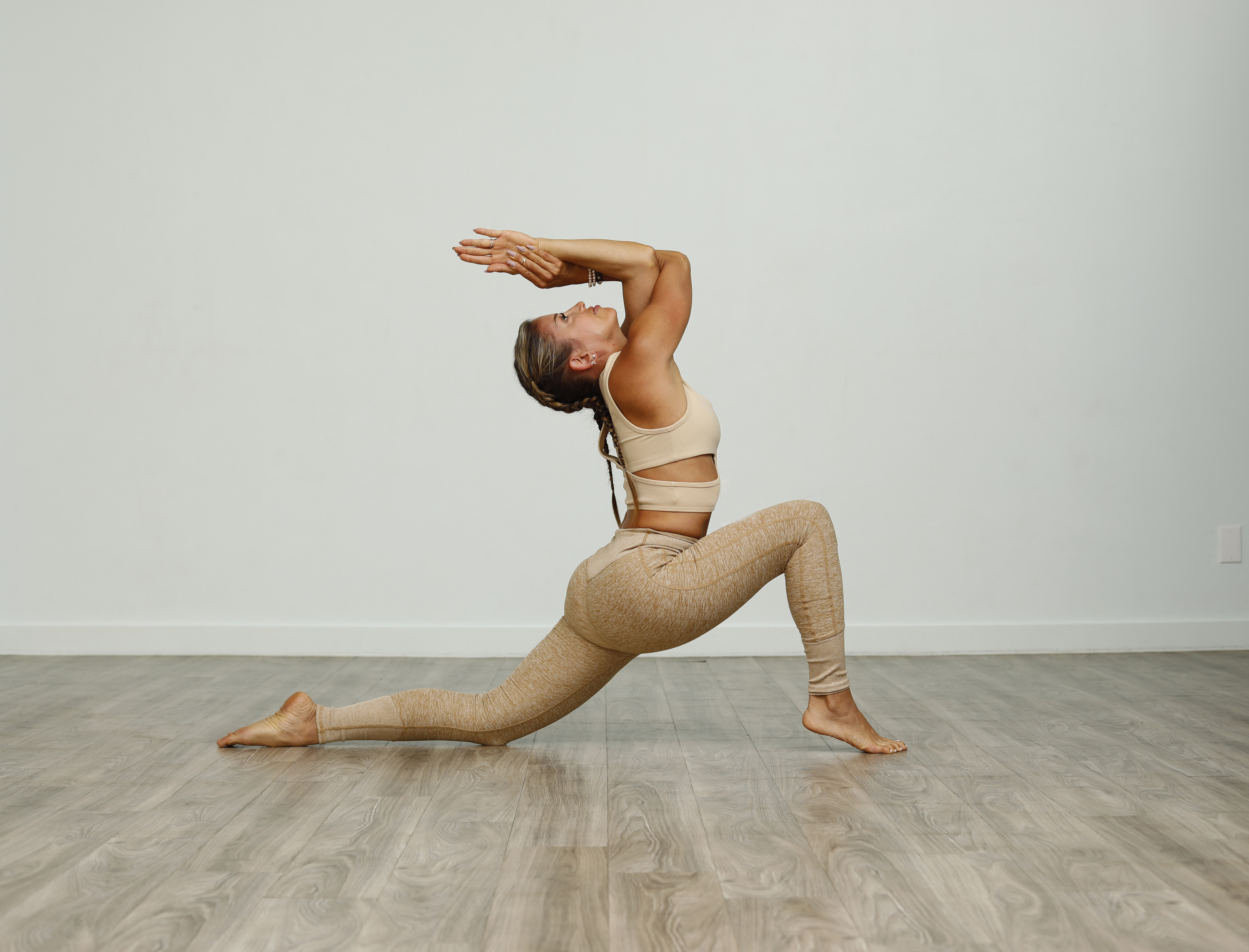
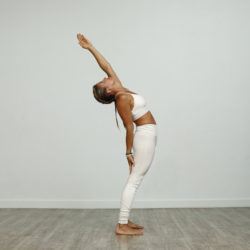
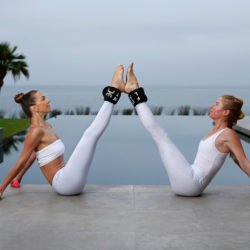
Leave a Reply
You must be logged in to post a comment.